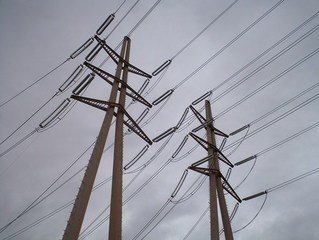Many Texas landowners have old electric line easements on their property with companies that are no longer in business, such as the old Texas Electric Co. AEP Texas, Inc. and/or Southwestern Electric Power Company (“SWEPCO”) now own many of these easements. These easements are often incredibly vague, especially regarding what can be done with the easement in the future and as to how wide the easement is.
A recent Texas Supreme Court case dealt with one of these easements. In Southwestern Electric Power Company v. Lynch, the Court considered a 1949 easement over lands in northeast Texas that did not contain a fixed width for the easement. The initial easement contained a wooden pole transmission line.
The original easements authorize SWEPCO “to erect towers, poles and anchors along” a set course on a right-of-way that crossed several privately owned properties. In addition, these easements granted SWEPCO the right to ingress and egress over the encumbered properties “for the purpose of constructing, reconstructing, inspecting, patrolling, hanging new wires on, maintaining and removing said line and appurtenances.” The width of the easement was not specified, however, SWEPCO historically utilized 30 feet as its easement.
SWEPCO began a modernization project in 2015 to replace the wooden poles with steel poles. The company also offered the landowners a supplement to the easement to sign. The supplement proposed setting the easement width at 100 feet.
After the project was completed, several landowners filed suit requesting a declaratory judgment that the court establish the easement as 30 feet wide. The landowners claimed that since SWEPCO historically only utilized an easement of 30 feet, that 30 feet should be set as the maximum width of the easement. At the trial, evidence concerning the historical 30-foot use was admitted into evidence. SWEPCO claim that the original easement gave it “general easements” over all the landowners’ properties and that the easements were not limited to a specific width. SWEPCO claimed that it was entitled to as much width for the easement as was reasonably necessary for its operations.
The trial court ruled for the landowners and entered an order that established the easement as 30 feet wide. The trial court also found that the 30 foot easement was the width that was reasonably necessary for the operation, use and maintenance of the transmission line. The Court of Appeals affirmed the judgment of the trial court. Both the trial court and the Court of Appeals relied on familiar Texas legal precedents that hold that SWEPCO’s historical use of 30 feet created a fixed and certain easement of 30 feet. The court of appeals relied on Houston Pipe Line Co. v. Dwyer, 374 S.W.2d 662, 666 (Tex. 1964), for its conclusion that “once the location of the easement is selected by the grantee, its rights then become fixed and certain.”
The precise language in the easement was as follows:
…an easement or right-of-way for an electric transmission and distributing line, consisting of variable numbers of wires, and all necessary or desirable appurtenances (including towers or poles made of wood, metal or other materials, telephone and telegraph wires, props and guys), at or near the location and along the general course now located and staked out by the said Company over, across and upon the following described lands . . . .
Together with the right of ingress and egress over [the Landowners’ predecessors-in-title] adjacent lands to or from said right-of-way for the purpose of constructing, reconstructing, inspecting, patrolling, hanging new wires on, maintaining and removing said line and appurtenances; the right to remove from said lands all trees (fruit trees excepted) and parts thereof, or other obstructions, which endanger or may interfere with the efficiency of said line or its appurtenances; and the right of exercising all other rights hereby granted. . ..
The Supreme Court reversed the opinions of the trial court and the Court of Appeals regarding the easement, and stated that Texas law has long recognized the existence of a “general easement” that does not require fixed width. Quoting prior law, the Court explained that a grant of the general easement implies “… a grant of unlimited reasonable use such as is reasonably necessary and convenient and is little burdensome as possible to the servient owner”. The Court held that extrinsic evidence, such as historical use, was irrelevant to this particular easement. The court went on to say that “If at some point in the future SWEPCO utilizes the easements in a way that the Landowners believe is unreasonable and not reasonably necessary, or in a way that violates the express terms of the easements, the Landowners could at that point bring suit to enjoin SWEPCO’s use of the easements”.
Historically, Texas courts in pipeline easement cases where the width of the easement was not specified have looked to the width of the easement actually used and have held that the pipeline company was limited to the width of the easement actually used. It is unfortunate that the Court has not applied the same rule to utility easements. In fact, the Court states that if SWEPCO’s use of the 100 foot easement was unreasonable, that the landowners could file suit to limit the easement. The opinion appears to ignore that the trial court already found that the 30 foot easement was the width that was reasonably necessary for the operation, use and maintenance of the transmission line.
Because the Supreme Court has apparently created a new rule for utility easements, this is an incredibly important case for landowners with properties burdened by those old easements.
 Texas Oil and Gas Attorney Blog
Texas Oil and Gas Attorney Blog


